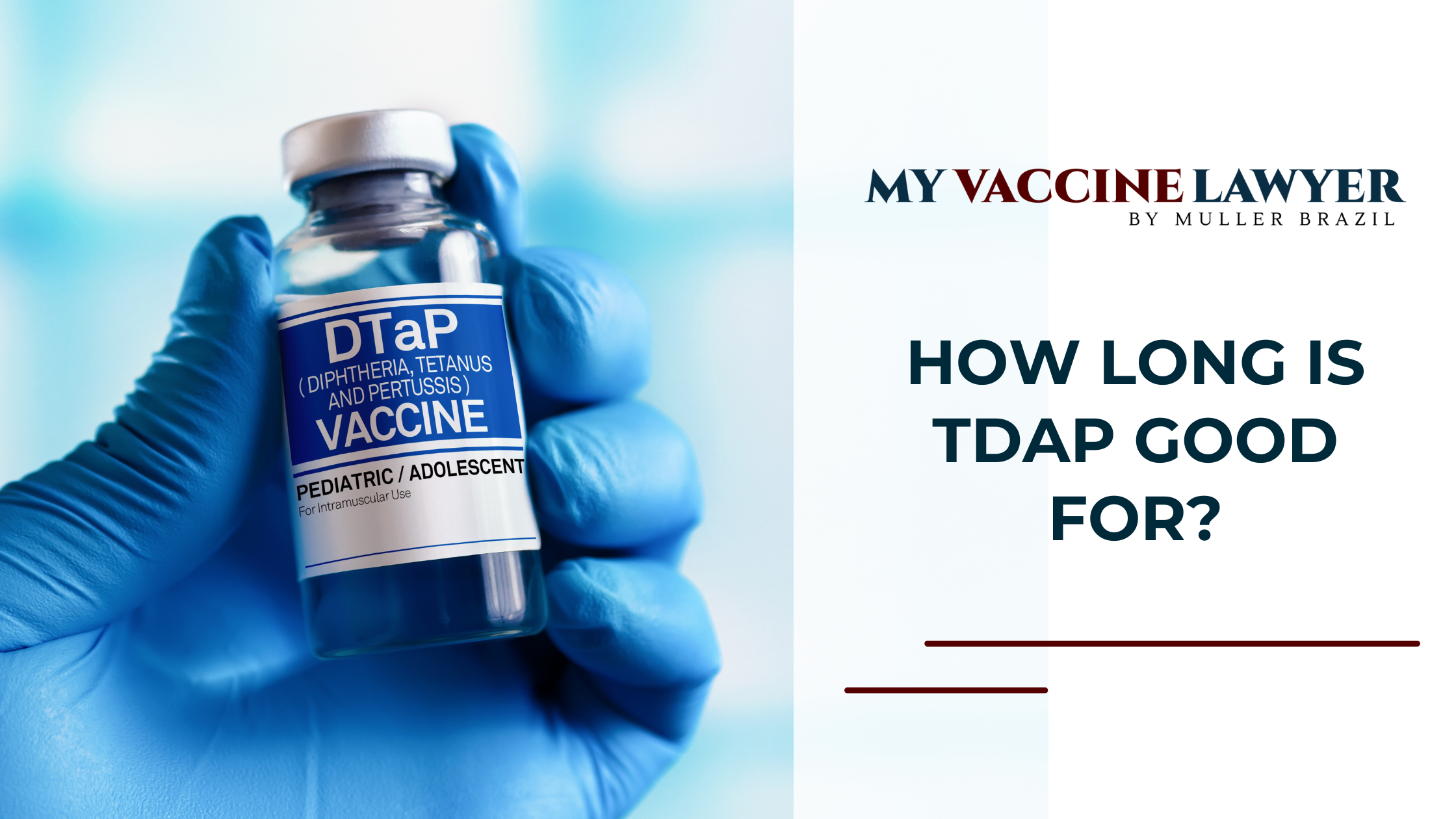Miller Fisher Syndrome: Understanding Causes & Connections
If you or someone you know is experiencing symptoms like weak eye muscles, breathing difficulties, or poor muscle coordination, it could be Miller...
7 min read
Vaccine Injury Law Resources / CIDP / Early Warning Signs of CIDP From a Vaccine Injury
 Paul Brazil
:
Feb 29, 2024 5:46:00 PM
Paul Brazil
:
Feb 29, 2024 5:46:00 PM
Tingling, weakness, and balance issues after a vaccine could be signs of chronic inflammatory demyelinating polyneuropathy (CIDP), don’t ignore them.
It starts with a strange tingling in your hands or feet. Then comes the numbness, the muscle weakness, the loss of balance. These are not minor side effects. They may be early warning signs of CIDP, known in full as chronic inflammatory demyelinating polyneuropathy. This rare disorder affects the peripheral nervous system and is sometimes triggered by vaccines in rare cases.
In typical CIDP, the immune system mistakenly attacks the myelin sheath that protects the body’s nerves. That attack disrupts electrical impulses between the nerve roots and muscle groups, leading to serious sensory symptoms. Most CIDP patients experience progressive weakness on both sides of the body that lasts at least eight weeks. Some develop pure motor CIDP, while others have pure sensory CIDP, but the warning signs often overlap.
If you were vaccinated in the last few weeks and are noticing symptoms of CIDP, such as asymmetric muscle weakness or trouble with coordination, it is critical to speak with a healthcare provider. Early diagnosis helps doctors diagnose CIDP accurately and begin CIDP treatment options that reduce the risk of permanent nerve damage.
CIDP doesn't start with a collapse. It starts with hesitation like a hand that trembles while buttoning a shirt or a foot that doesn’t lift quite right. These are not isolated flukes, they’re early warning signs of CIDP, a rare disorder where the immune system attacks the body’s nerves. What begins as mild discomfort becomes progressive nerve damage, often missed for a few weeks too long.
Below are some of the most common symptoms of CIDP during early onset:
Progressive muscle weakness in the hips, shoulders, or limbs
Sensory symptoms including tingling, numbness, or burning
Unsteady gait or feeling like you're walking on cushions
Inconsistent grip strength or objects slipping from your hands
Other symptoms like leg stiffness, fatigue, or dizziness
Loss of deep tendon reflexes (ankles, knees, elbows)
Sudden drops in coordination, especially on stairs or uneven ground
Trouble breathing during activity or at night
Episodes of muscle weakness in one limb
Balance issues without clear cause, often blamed on age or exhaustion
CIDP symptoms typically last at least eight weeks in most cases, which separates it from acute neurological disorders. Some CIDP patients experience pure sensory CIDP with no visible weakness. Others develop pure motor CIDP, where strength fades without pain. Both forms are progressive and, if untreated, can lead to permanent nerve damage.
People often wait too long because they mistake early symptoms for overwork, age, or stress. But the risk factors are real. And without early evaluation by a healthcare provider or physical therapist, the condition can silently advance. Many patients end up needing long-term physical therapy just to regain daily function.
If you've noticed any of these changes, especially following vaccination, don’t ignore the signals. You're not looking at normal wear and tear. You're looking at a possible autoimmune response attacking your peripheral nervous system.
If your symptoms started within a few weeks of getting a vaccine and haven't gone away, your doctor should be investigating for chronic inflammatory demyelinating polyneuropathy CIDP. The challenge is that most primary care providers don’t consider CIDP early, especially when symptoms follow a vaccination. They might attribute muscle weakness or sensory loss to stress, aging, or a pinched nerve, ignoring a critical piece of your medical history: the shot you received.
CIDP is diagnosed through a combination of tests that look for nerve damage caused when the immune system mistakenly attacks the peripheral nervous system. The process typically starts with nerve conduction studies, which measure how fast electrical impulses move through your nerve roots and nerve fibers. Slowed signals, conduction block, or temporal dispersion are red flags. These findings may be followed by electromyography (EMG) to evaluate muscle response.
Next, a spinal fluid analysis checks the cerebrospinal fluid for elevated protein, which is common in CIDP but not in many other disorders. In rare cases, a nerve biopsy may be needed to confirm inflammation and demyelination in the nerve cells themselves. Some neurologists also order blood tests and urine tests to rule out mimicking conditions. But here's the critical detail: if your symptoms developed soon after a flu shot, tetanus-containing vaccine, or other routine immunization, that timing must be documented clearly. It strengthens the likelihood of CIDP being vaccine-related and sets the stage for a successful VICP claim.
CIDP doesn’t exist in a vacuum. It's part of a complex category of neurological disorders that often blur together. That’s why getting an accurate diagnosis can take months, especially if your symptoms fall into the gray area between sensory loss and motor weakness. Many patients are first told they may have Guillain-Barré syndrome, multiple sclerosis, or even amyotrophic lateral sclerosis. Others are misclassified under peripheral neuropathy or rare subtypes like Lewis Sumner syndrome or multifocal motor neuropathy.
These conditions all affect the nervous system, but CIDP has a specific diagnostic footprint, progressive symptoms that last at least eight weeks, clear immune-mediated nerve damage, and specific responses in nerve and fluid testing. What makes diagnosis more difficult in vaccine injury cases is the tendency for physicians to overlook the connection between vaccination and immune response. A vaccine may trigger CIDP in rare cases by causing the immune system to attack the myelin sheath protecting the body’s nerves. This link won’t show up in lab value but the timeline, combined with test results, tells the story.
Getting CIDP diagnosed correctly doesn’t just impact treatment, it also defines what legal options are available. Without proper testing, a vaccine injury claim under the VICP can fall apart. But when testing confirms demyelination and the patient’s medical history shows symptoms began shortly after vaccination, the pieces align.
When the diagnosis is right, the next question becomes how to treat CIDP and how much it will cost to do so.
CIDP treatment means stopping the immune system from attacking your nervous system and preventing permanent nerve damage. That takes aggressive, often long-term care, especially for patients who developed CIDP as a vaccine injury. If your condition was triggered by a vaccine, these costs don’t just affect your health, they directly support your compensation claim under the VICP.
The most common treatment options for CIDP include:
• Intravenous immunoglobulin (IVIG)
• Plasma exchange (plasmapheresis)
• Immunosuppressant medications like corticosteroids
• Physical therapy with a licensed physical therapist
• Ongoing neurologist visits, MRIs, blood work, and follow-ups
These aren’t one-time charges. They stack up fast.
IVIG infusions: $8,000–$20,000 per round (repeated monthly or bi-monthly)
Plasma exchange: $5,000–$10,000 per session (often needed 2–3x/week for several weeks)
Steroids and immunosuppressants: $500–$2,000/month, depending on dose and insurance
Physical therapy: $150 per session, 2–3 sessions per week for 3–6 months minimum
Out-of-pocket costs: Co-pays, labs, and diagnostics can total $10,000–$30,000 yearly
For severe cases, especially those with permanent muscle weakness or nerve loss, doctors may consider stem cell transplant to reset the immune response. This involves harvesting healthy stem cells, often from healthy donors, and can cost over $150,000, not including hospital stays.
Some providers also use therapies that inject healthy stem cells to try and rebuild damaged nerve fibers, though this remains experimental and isn’t always covered by insurance.
And it doesn’t stop with the direct costs. You may lose wages, require mobility aids, or face home modifications due to reduced muscle mass or long-term fatigue. In rare cases, CIDP patients require 24/7 care to prevent falls or complications from autonomic nerve damage.
This is why CIDP treatment, especially when triggered by a vaccine, isn't just a health issue, it's a financial crisis. And it's exactly what the Vaccine Injury Compensation Program was designed to cover.
Your next step is not just to treat CIDP. It’s to be compensated for treating CIDP.
If your symptoms began weeks after receiving a shot, especially one containing tetanus toxoid or influenza, you may qualify for financial compensation through the federal government’s Vaccine Injury Compensation Program (VICP).
The VICP was created to compensate individuals who suffer serious vaccine-related injuries. Since its inception in 1988, the program has paid out more than $5 billion to people who developed disabling conditions after vaccination, including inflammatory nerve conditions like CIDP. It's a no-fault system, meaning you don’t have to prove a manufacturer did anything wrong. If the evidence shows the vaccine likely triggered your condition, the program can pay for your care.
Vaccines that have been associated with CIDP in past claims include:
Influenza vaccines (Flu shots)
Tetanus-toxoid vaccines (Tdap, DTaP, Td)
Hepatitis B vaccine
COVID-19 vaccines (certain claims reviewed under VICP or CICP depending on context)
If you're dealing with CIDP, you may already know how expensive treatment is. The VICP can cover:
Hospital bills and medical costs (including physical therapy and long-term CIDP treatment)
Lost income or future wages
Pain and suffering (capped at $250,000)
Legal representation costs (covered separately by the program)
To get paid, you need clear records showing CIDP was diagnosed, how soon it developed after the vaccine, and how it's being treated.
Take Control of Your Injury Today
No, CIDP is not currently listed on the Vaccine Injury Table, but that doesn’t mean you can’t be compensated. It’s considered an off-table injury, which means the process requires proving that the vaccine caused or significantly contributed to the condition. That includes:
A confirmed diagnosis of chronic inflammatory demyelinating polyneuropathy
A documented history showing symptoms started within a few weeks to months after the vaccine
Medical expert review and opinion linking the vaccine to your condition
Many people have successfully filed CIDP claims this way. It just requires more documentation and the right legal team to present it.
When you’re dealing with CIDP after a vaccine, you don’t need another vague promise. You need lawyers who know how to win these cases, and who treat you like more than a file number. At My Vaccine Lawyer, we’ve represented thousands of vaccine injury clients and recovered millions of dollars in VICP settlements. We don’t waste time, we build strong cases from day one and push aggressively for maximum compensation.
Consultation That Actually Means Something
When you reach out to us, you don’t get screened by a paralegal or sent into a voicemail loop. You speak directly with a vaccine injury lawyer. We review your symptoms, timeline, and medical history to assess whether CIDP can be linked to your vaccination and if your case is strong under VICP standards.
We Learn Your Full Story
Once we take your case, we don’t just gather records. We get to know what happened to you, how it’s changed your life, and what your day-to-day now looks like with CIDP. That human detail matters, not just to us, but to how we present your case.
We Build the Strongest Case Possible
We partner with in-house medical experts to strengthen your claim and connect your CIDP diagnosis to the vaccine. We handle the medical record review, timeline building, and expert testimony so that your case is ready to be paid, not delayed.
We Go to Bat in Vaccine Court
We file your claim in the Vaccine Injury Compensation Program and handle everything from negotiations to litigation if needed. If your case ends up in vaccine court, we represent you at every step, aggressively, skillfully, and without hesitation.
We know the VICP inside and out. We know what evidence works, what arguments fall flat, and how to position your claim for approval. We don’t outsource. We don’t pass you around. We fight to win and we take every case personally.
If you're ready to take action, your first consultation is free. You pay nothing unless we win your case.
Paul Brazil is a native of Dunmore, Pennsylvania and a graduate of Dunmore High School. For his undergraduate education, he attended Bloomsburg University where he majored in political science. He then went on to earn his JD from Widener University School of Law. Following graduation from law school, Mr. Brazil worked at a large Philadelphia civil defense firm where he litigated workers’ compensation claims and Heart and Lung Act cases. In 2012, he joined with his coworker Max Muller to form Muller Brazil.

If you or someone you know is experiencing symptoms like weak eye muscles, breathing difficulties, or poor muscle coordination, it could be Miller...

If you're thinking about getting a flu shot, it's good to know that Guillain-Barré Syndrome (GBS) is a very rare side effect, occurring in only about...

Vaccines have a powerful role in protecting against dangerous diseases, especially for older adults and individuals at high risk.
